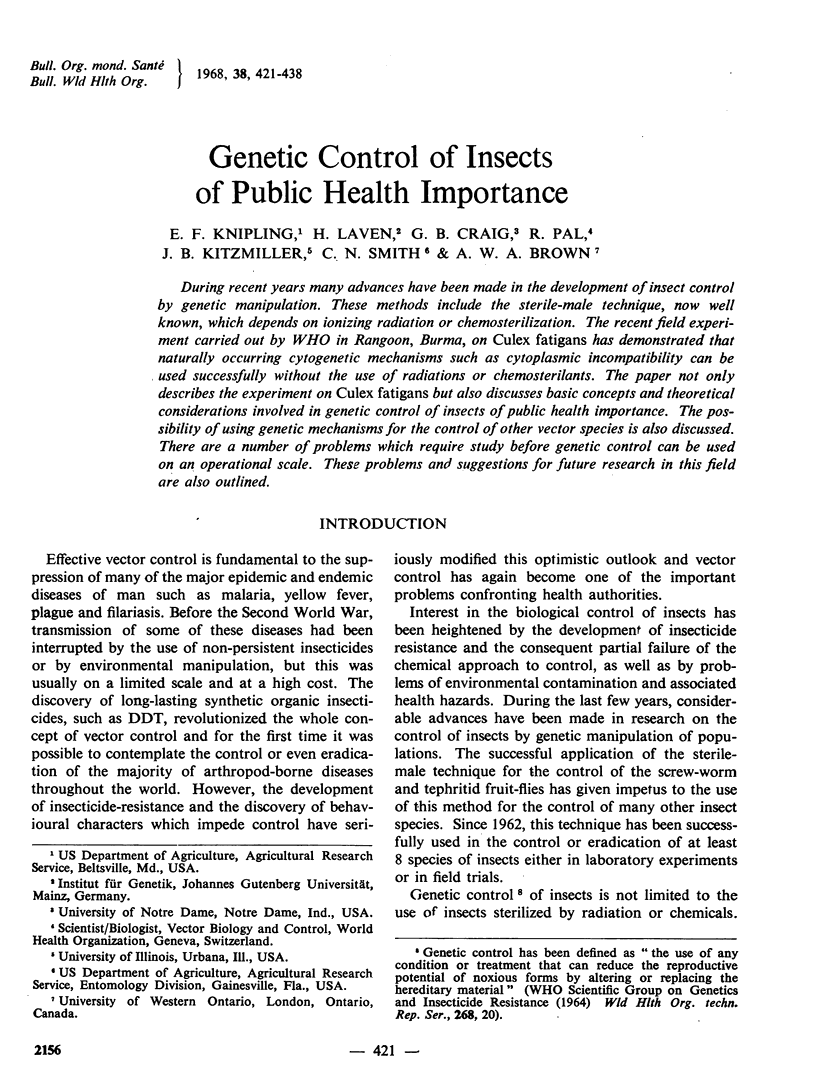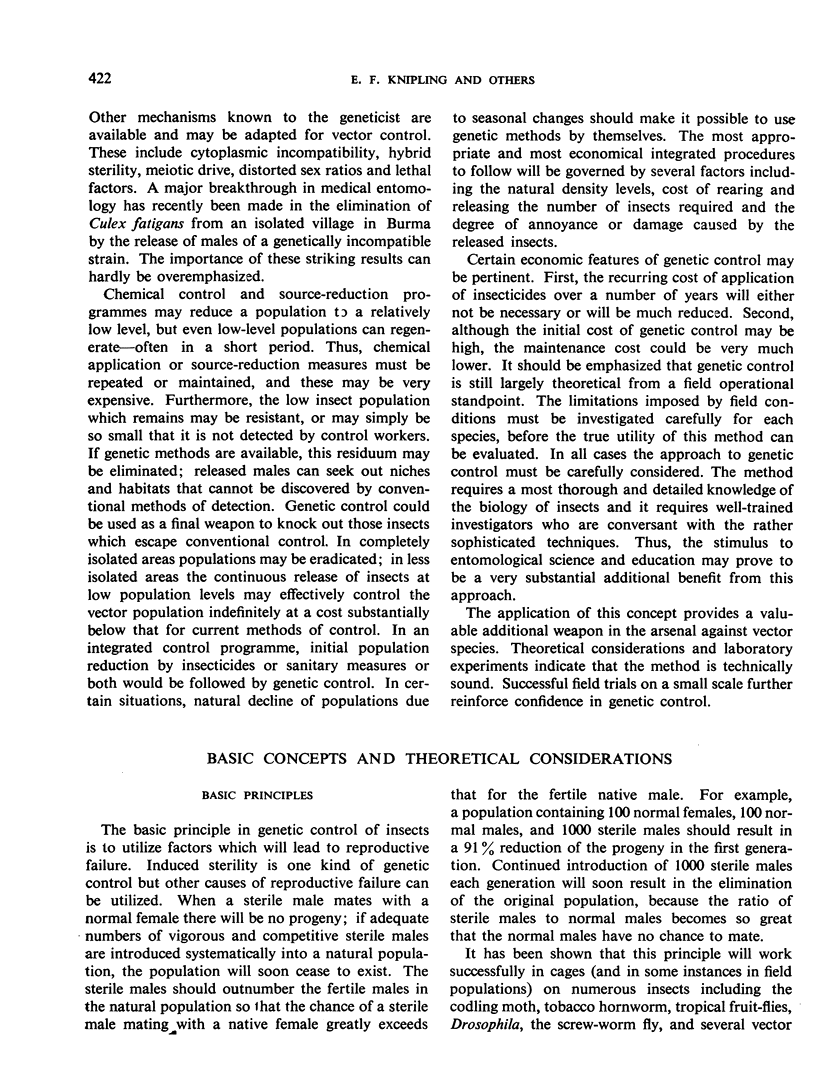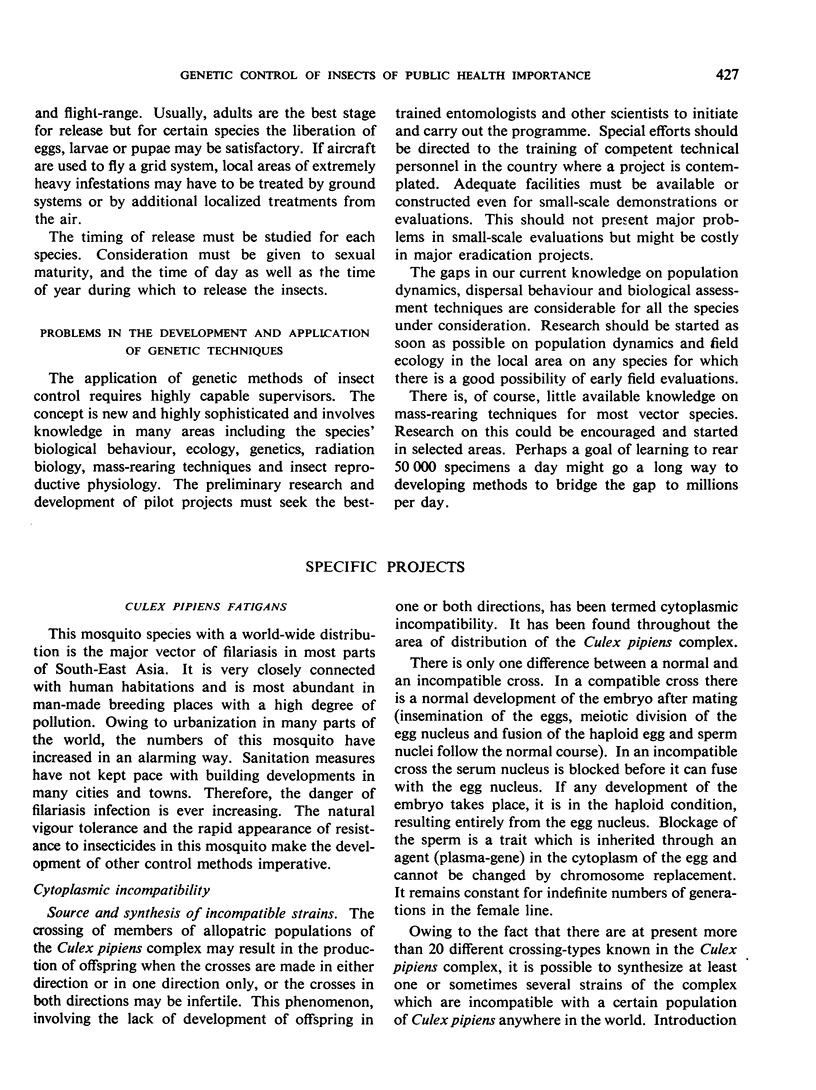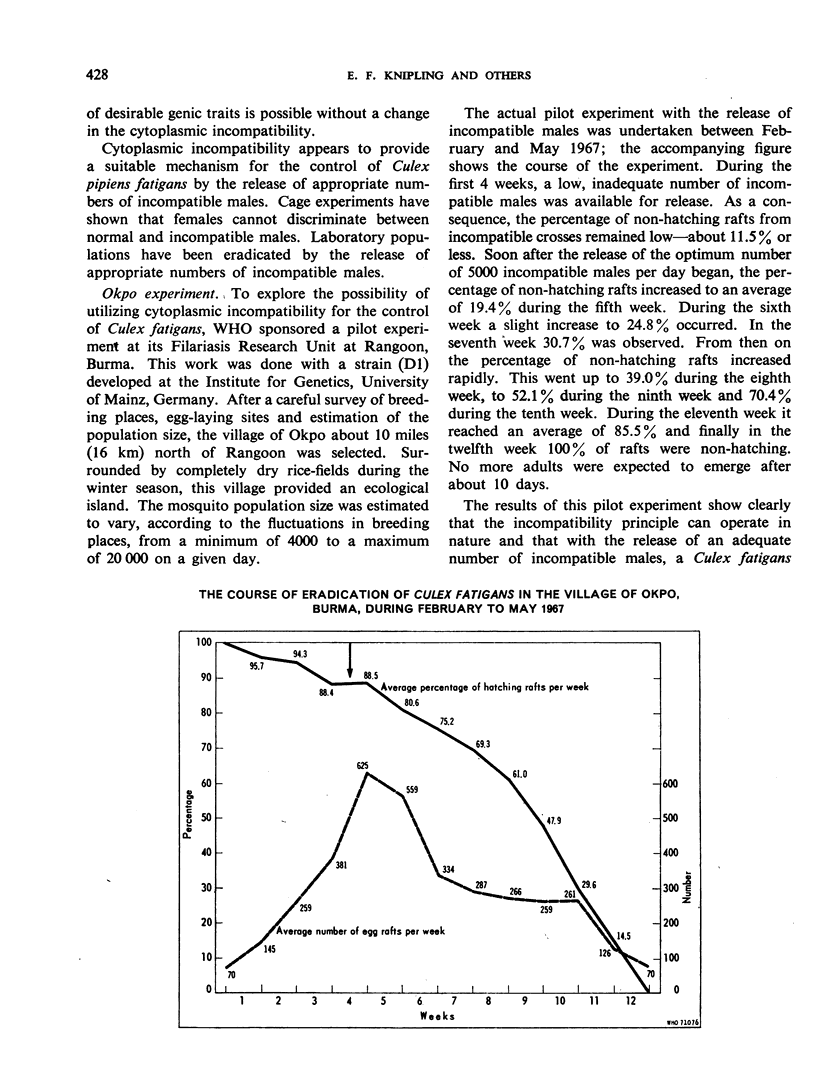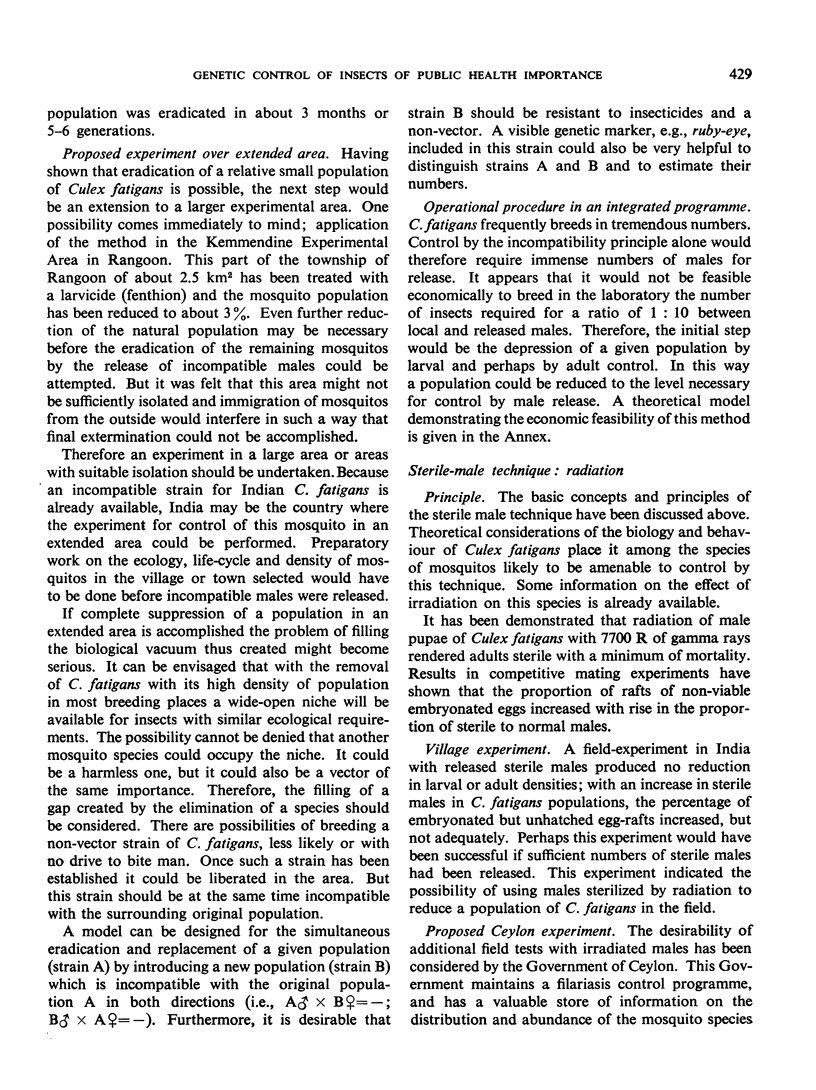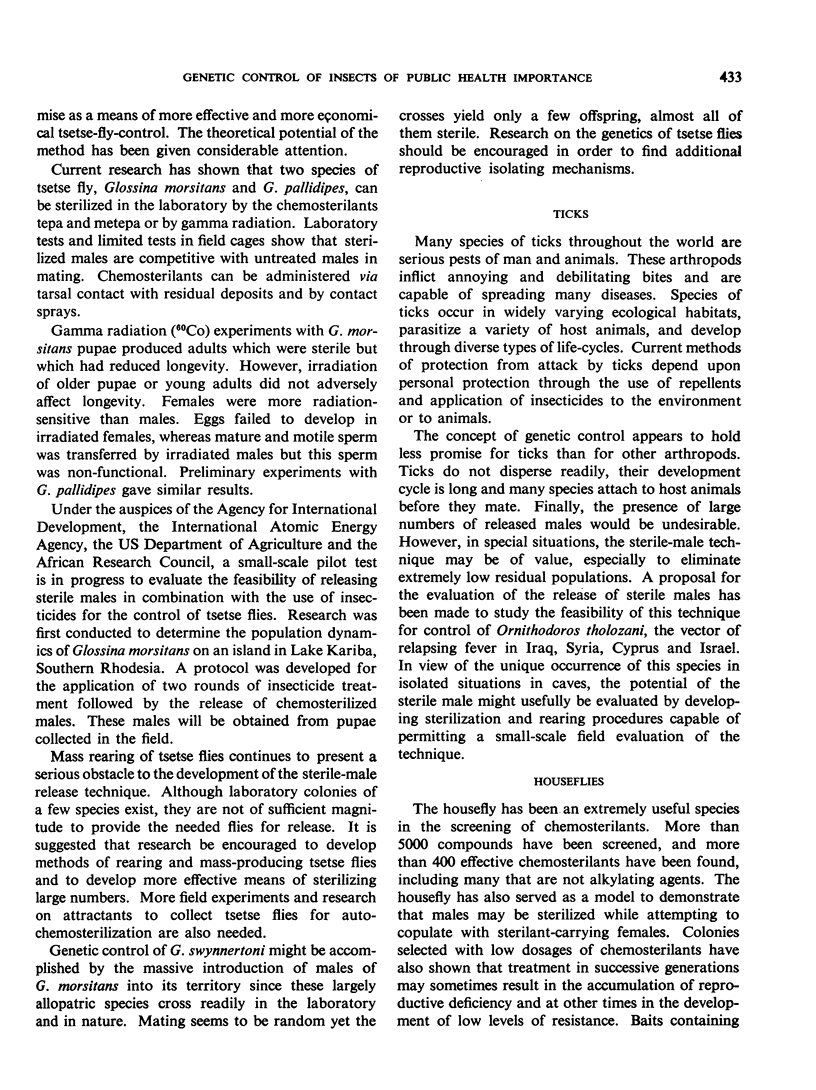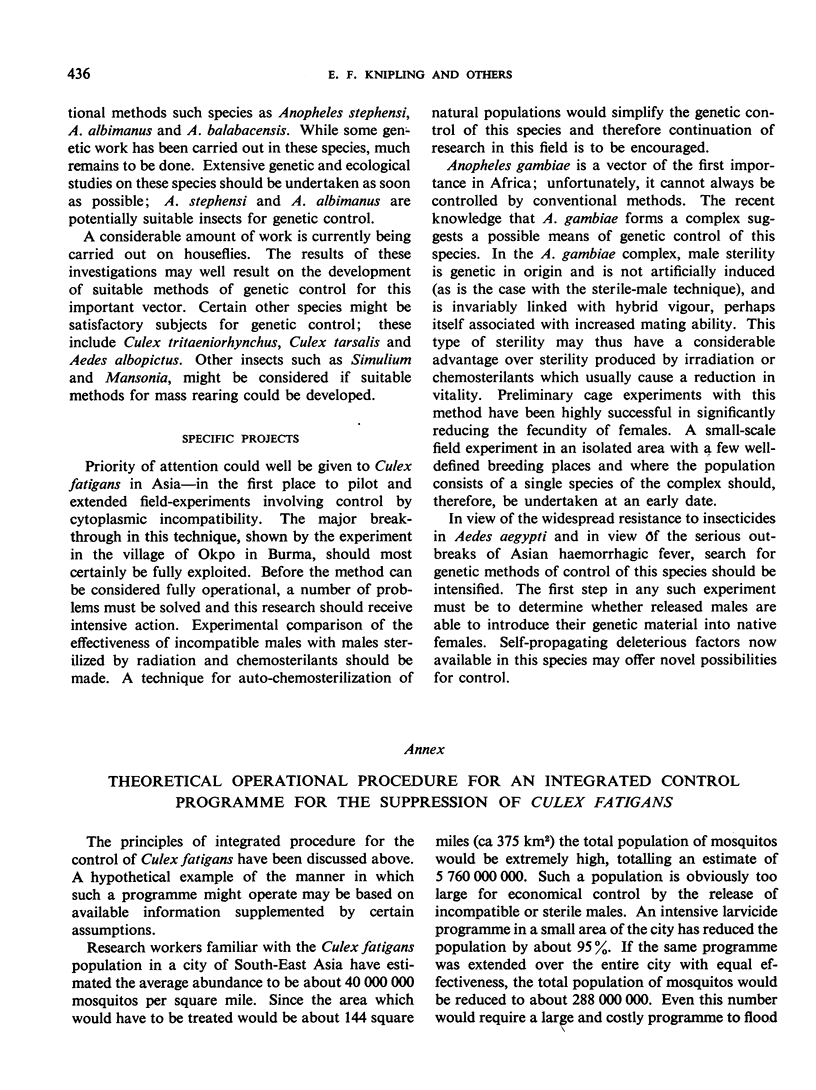Abstract
During recent years many advances have been made in the development of insect control by genetic manipulation. These methods include the sterile-male technique, now well known, which depends on ionizing radiation or chemosterilization. The recent field experiment carried out by WHO in Rangoon, Burma, on Culex fatigans has demonstrated that naturally occurring cytogenetic mechanisms such as cytoplasmic incompatibility can be used successfully without the use of radiations or chemosterilants. The paper not only describes the experiment on Culex fatigans but also discusses basic concepts and theoretical considerations involved in genetic control of insects of public health importance. The possibility of using genetic mechanisms for the control of other vector species is also discussed. There are a number of problems which require study before genetic control can be used on an operational scale. These problems and suggestions for future research in this field are also outlined.
Full text
PDF